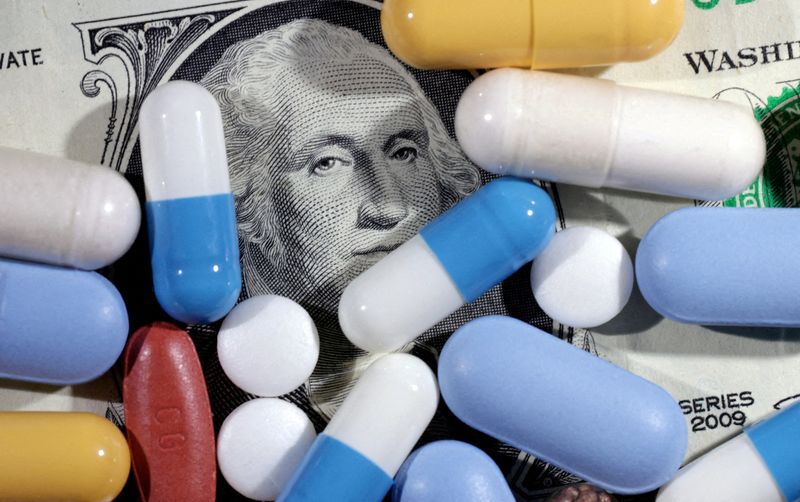
By Deena Beasley
(Reuters) -U.S. tariffs on pharmaceuticals could eventually mean higher prices for brand-name medicines, but in the near term the costs would likely be absorbed by drugmakers rather than patients whose payments are often set by health insurance.
U.S. health insurers, which pay the bulk of prescription drug costs, act as a buffer between drugmakers and patients, with beneficiaries subject to co-pays and co-insurance based on the prices insurers negotiate with drugmakers.
“Patented drugs are already generally set at the price the market will bear, so in that sense manufacturers are not likely to substantially increase the prices of these drugs,” said Melissa Barber, postdoctoral fellow at Yale University and an expert on drug pricing.
On Monday, the Trump administration said in a regulatory filing it had opened a national security investigation into pharmaceuticals to show why the U.S. needs tariffs to boost domestic manufacturing. Rates and timing remain uncertain, but the industry has been lobbying for phased-in tariffs.
The hit could be big. Close to $213 billion in pharmaceutical products were imported to the U.S. last year, nearly triple 2014’s $73 billion, according to the United Nations trade database.
And equity research group Bernstein Societe Generale estimated that U.S. tariffs could add $46 billion in costs to the pharmaceutical industry, compared with current annual revenue of $700 billion for major companies. The threat of import duties has already spurred drugmakers to accelerate shipments to the U.S. and warehouse supplies, which analysts say will protect their 2025 financial outlooks and take the pressure off any immediate price increases.
Some tariff costs could eventually be shifted to patients and the taxpayers who fund U.S. government health programs, but the real risk is to lower-margin, generic drugs, said Robin Feldman, a professor at UC Law San Francisco. Cheaper generic drugs, which are allowed after patents expire on branded products and are mostly made in India and China, account for over 90% of U.S. prescriptions, but just 17% of spending, according to the Association for Accessible Medicines.
The trade group has said their members will not be able to raise prices because their margins are so thin. ING analyst Diederik Stadig estimated that a 25% tariff on India, for instance, would result in an increase of 17.5% for generic drugs produced in India.
Bill Coyle, head of biopharma at consulting firm ZS, said drugmakers will try to pass on tariff costs, but because many categories are very competitive, “the real downstream impact” would be cost-cutting by companies.